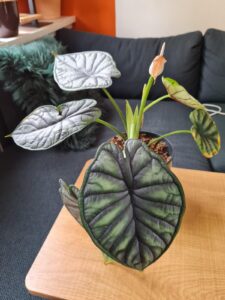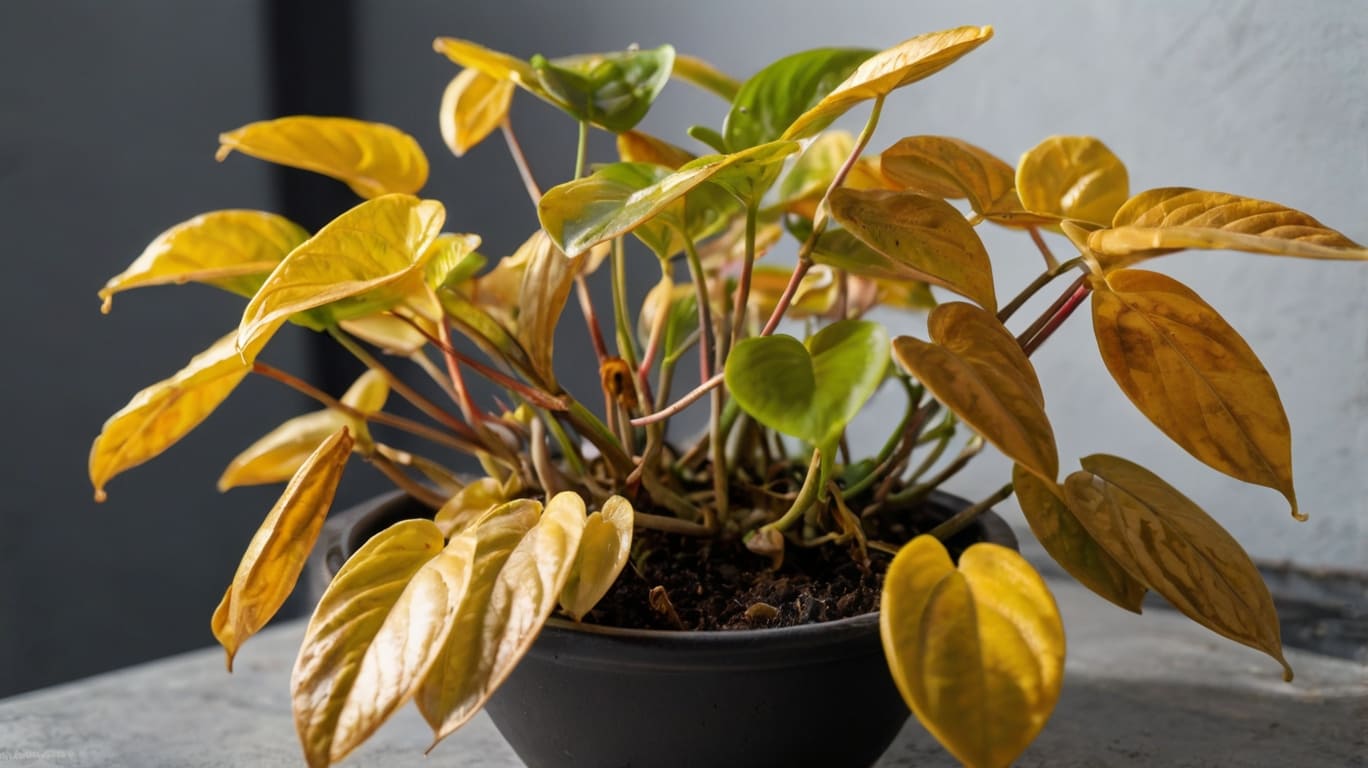
Leaf scorching, or tip burn, is a common issue that can affect many houseplants. If the tips or edges of your plant’s leaves are turning brown or black, it’s a sign that something is going wrong. This guide will help you understand, treat, and prevent leaf scorch, ensuring your green companions stay healthy and vibrant.
In this article
What is Leaf Scorch?
Leaf scorch is a condition where the edges or tips of plant leaves turn brown or black, often appearing dry and crispy. It’s a sign that your plant is stressed and needs attention. While it can be alarming to see, understanding the causes can help you nurse your plant back to health.
Signs of Leaf Scorch
- Brown or black leaf tips and edges
- Crispy or dry leaf margins
- Yellowing leaves that progress to brown
- Leaf curling or wilting
Common Causes of Leaf Scorch
Improper Watering
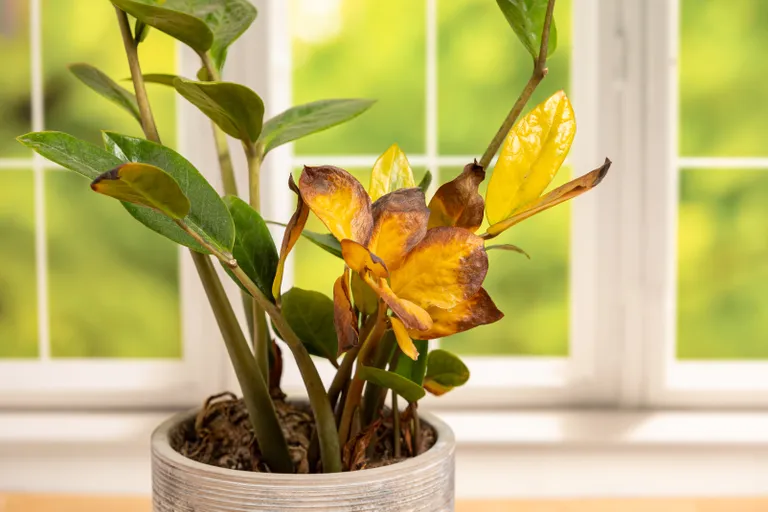
Inconsistent watering is like subjecting your plants to a roller coaster ride they never asked for. Too much, too little, or wildly unpredictable watering can lead to those telltale brown tips.
Expert tip: Aim for not too wet, not too dry, but just right. Get to know your plants’ individual needs. Some like to dry out between waterings (hello, succulents!), while others prefer to stay consistently moist (looking at you, ferns).
Fluoride Toxicity
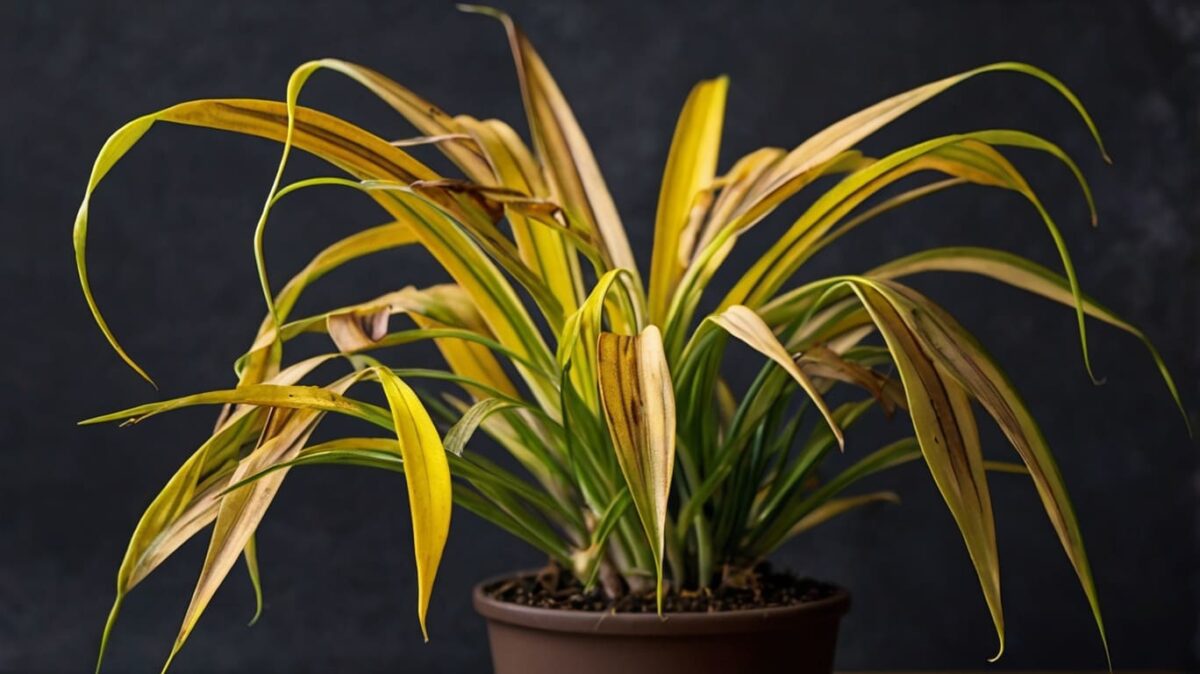
Some plants are the divas of the plant world when it comes to fluoride. Calatheas, prayer plants, and their fancy-leaved relatives are particularly prone to these fluoride-induced meltdowns.
Expert tip: Try using distilled or rainwater for these sensitive souls. It’s like giving them a spa day, minus the cucumber slices.
Fertilizer Burn
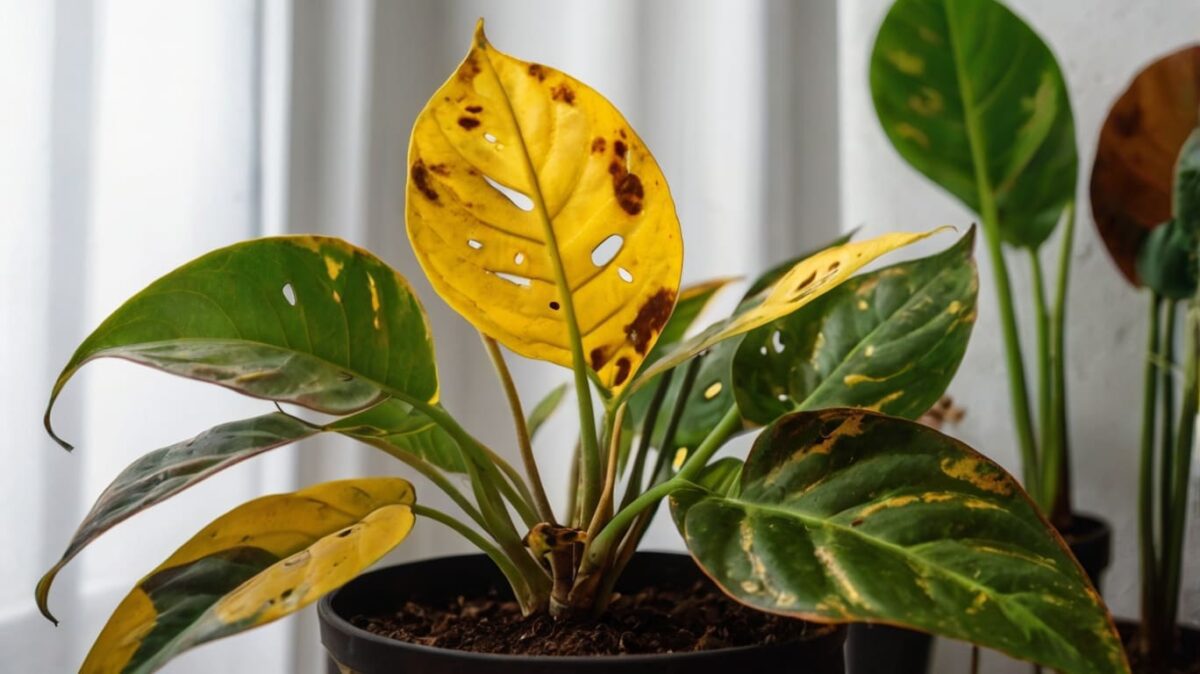
Remember that time you thought, “If a little fertilizer is good, a lot must be better”? Overzealous fertilizing is like force-feeding your plants a super-sized meal every day for a week.
Expert tip: Stick to the recommended dosage on the fertilizer label. Better yet, go for a “less is more” approach. Try diluting the fertilizer to half-strength or fertilizing less frequently.
Extreme Temperature Changes
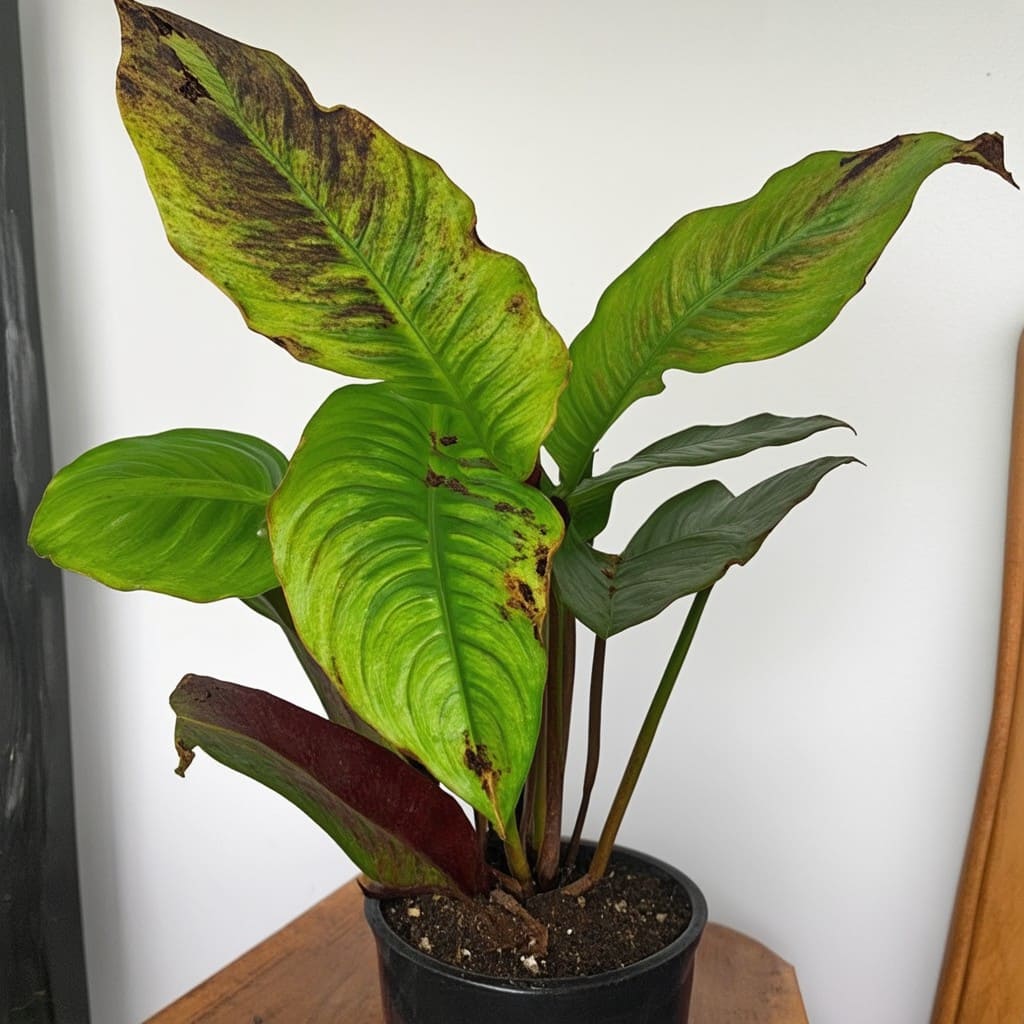
Plants can be as sensitive to temperature changes as your grandma who “feels a storm coming” in her knee. Extreme cold or heat, especially near windows, can scorch leaves faster than you can say “climate control.”
Expert tip: During harsh weather, give your plants a little staycation away from the windows. They’ll appreciate the break from Mother Nature’s mood swings.
Low Humidity
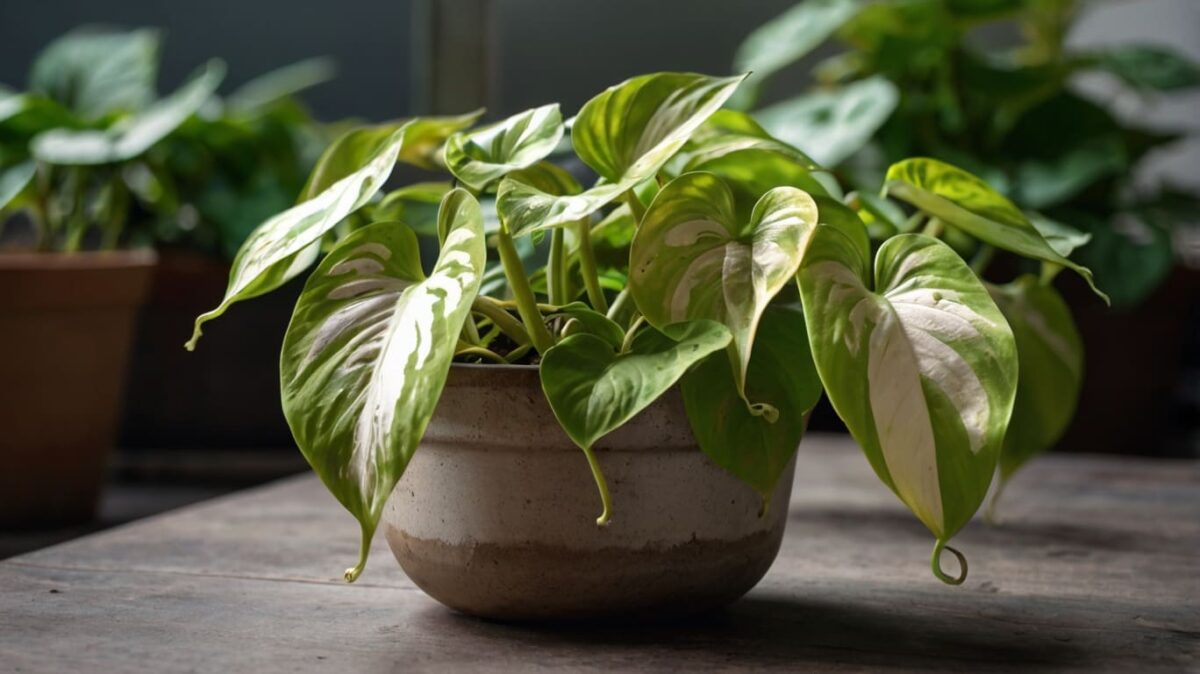
Low humidity is like the Sahara Desert for some houseplants. Many of our beloved houseplants are tropical natives, used to air so thick you could practically swim through it.
Expert tip: Group your plants together for a humidity boost – it’s like a little plant support group where they can share moisture. Use pebble trays filled with water to increase local humidity.
Pest or Disease Issues
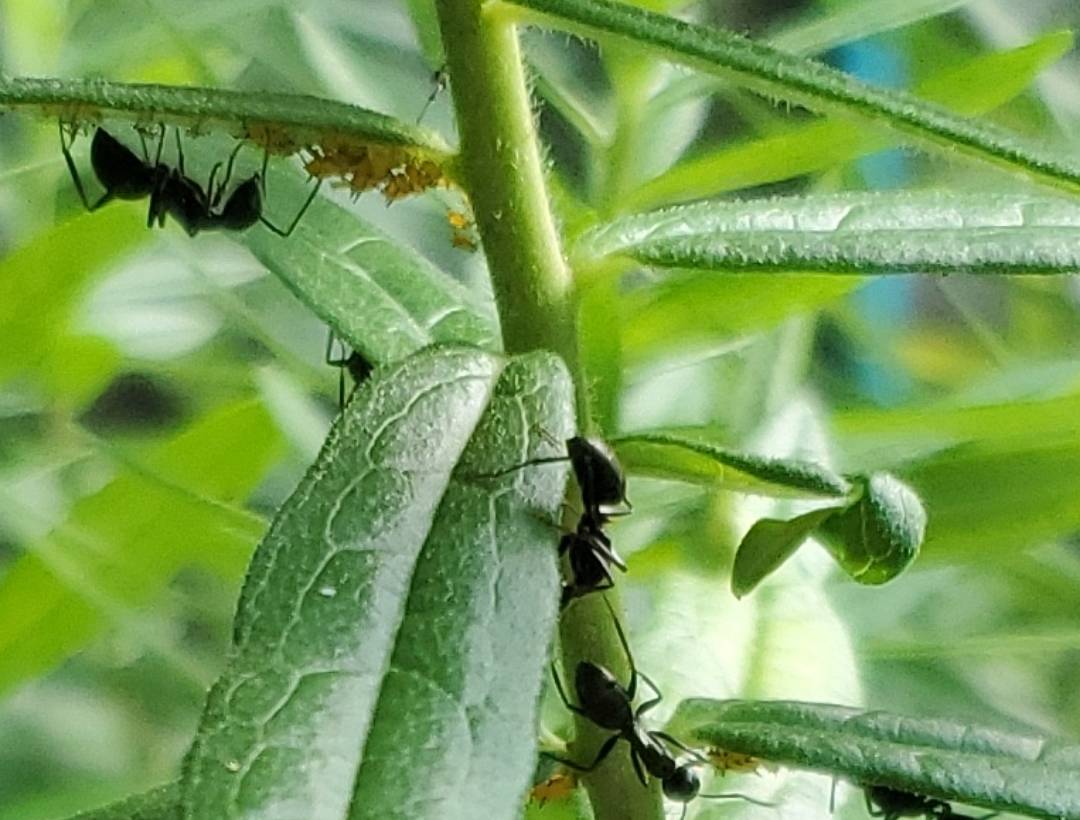
Sometimes, uninvited guests or sneaky pathogens can cause leaf damage that resembles scorch.
Expert tip: Regularly inspect your plants for signs of pests or disease. Early detection can prevent a small problem from becoming a big one.
RELATED: 7 Strategies to Protect Your Indoor Herb Garden from Pests
How to Treat Leaf Scorch
- Identify the Cause: Use the information above to pinpoint what’s triggering the leaf damage.
- Prune Affected Leaves: Use clean, sharp pruners to remove severely damaged portions.
- Adjust the Environment: Move the plant to a better location, increase humidity, or modify your watering routine as needed.
- Flush the Soil: If overfertilization is suspected, flush the soil with clean water to remove excess salts and minerals.
- Be Patient: With proper care, your plant should start producing new, healthy growth over time.
Preventing Leaf Scorch
- Water Wisely: Develop a consistent watering schedule based on each plant’s needs.
- Monitor Light Exposure: Ensure plants are getting appropriate light – not too much, not too little.
- Maintain Proper Humidity: Use humidifiers or pebble trays for moisture-loving plants.
- Fertilize Carefully: Follow recommended dosages and schedules for fertilization.
- Control Temperature: Keep plants away from drafts, air conditioners, and heat sources.
- Use Appropriate Water: Consider using distilled or rainwater for sensitive plants.
Frequently Asked Questions
Can Plants Recover from Leaf Scorching?
Yes, many plants can recover with proper care. Remove damaged leaves, address the underlying cause, and be patient. New, healthy growth is a sign your efforts are paying off.
What’s the Best Way to Water Plants to Prevent Leaf Scorch?
Water when the top inch or two of soil becomes dry. Avoid using softened water, and consider distilled or rainwater for sensitive plants.
How Can I Increase Humidity for My Houseplants?
Use pebble trays, group plants together, run a humidifier, or regularly mist the foliage to increase humidity levels.
Becoming a master of plant care is a journey, not a destination. Each crispy leaf or droopy stem is just an opportunity to learn and grow. Keep those green thumbs up, stay curious, and don’t be afraid to experiment a little.
We’d love to hear about your experiences with leaf scorch and any tips you’ve discovered. Share your stories in the comments below, or reach out if you have any questions.
RELATED: Revive Your Dracaena: Expert Advice to Cure Yellowing Leaves and Brown Tips
Happy gardening!


